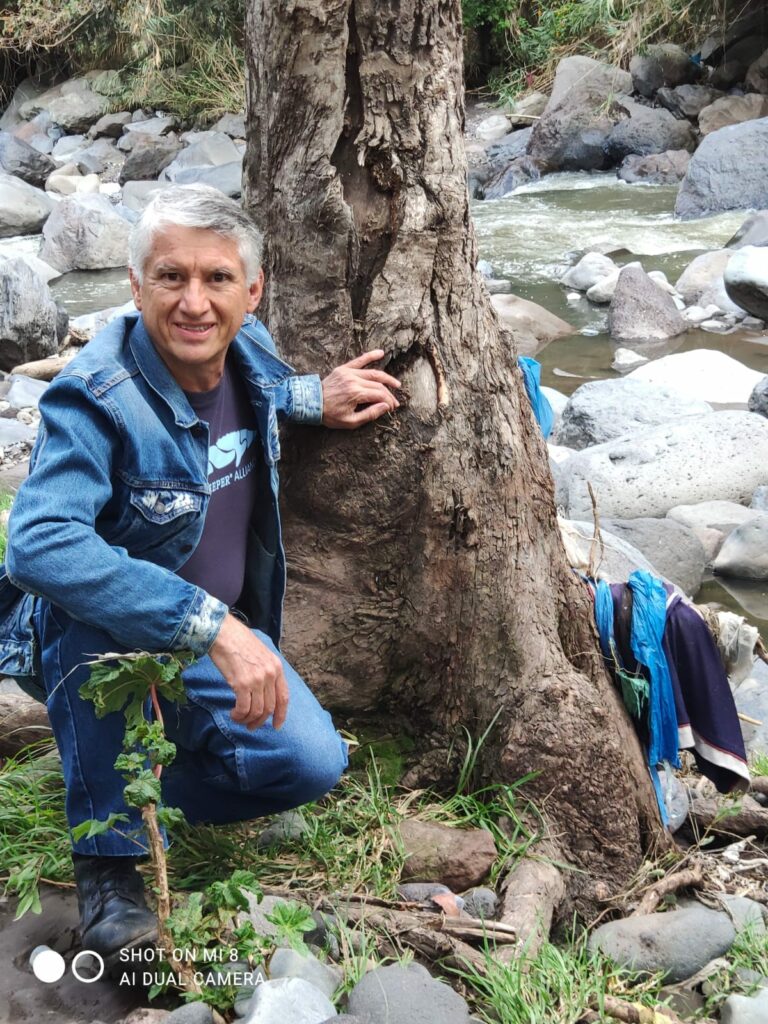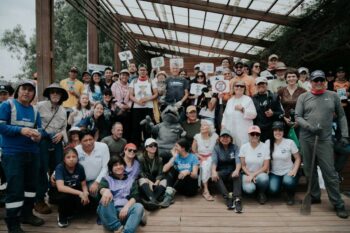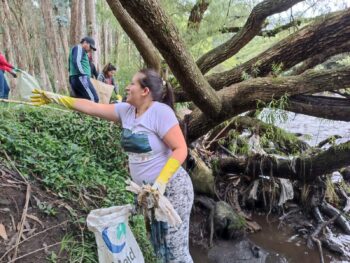Who Is Waterkeeper: Patricio Chambers, Guayllabamba Waterkeeper
By: Thomas Hynes

Patricio Chambers has been the Guayllabamba Waterkeeper in Ecuador since 2018. He learned the value of caring for nature from his father, Rafael Chambers, who founded the organization in 2010 alongside two of Patricio’s siblings. Suffice to say, protecting local waterways is truly a family affair. However, Patricio’s impact extends far beyond his own relatives.
The Guayllabamba River originates way up in the Andes Mountains in northern Ecuador. Its name translates to “green plain” in the indigenous language of Quichua. The jurisdiction of Guayllabamba Waterkeeper includes the Guayllabamba River and its tributaries. It also includes the millions of people who live in the area, mostly from the city of Quito. For years, Patricio recalls that his father’s great fieldwork in the moorlands was not trickling down to the larger community.
“So we decided to start working in cleanup activities in the rivers near to Quito, Ecuador’s capital city. We involved members of the community, through a citizen collective, in order to create more consciousness around the protection of our rivers. The intention of this kind of activity is to educate people about nature, rivers care, pollution, and the environment, in general,” says Patricio. “We have a responsibility to Mother Nature. All people have this responsibility. When the volunteers are working to clean up the rivers, they can see what happens with their garbage. Because it’s not the same to talk about protecting the rivers and nature. When you put your hands into a contaminated and polluted river, you can see the real problem we have.” 
Tragically, there are many opportunities for this kind of learning experience as pollution and trash seem to flow unabated. This is due to Quito having little to no systems in place to process the garbage and very little infrastructure to treat wastewater. It means everything — all the trash and waste from nearly 3 million people — ends up in the rivers.
“In a very short time, we could be thinking of a dead river,” says Patricio. “We have to get it decontaminated urgently.”
To educate people about this dire problem, Patricio and Guayllabamba Waterkeeper, as part of the citizen Collective called “San Pedro River Rescue, rely on an ancient practice of collective community cleanup actions known as mingas. The term, like the river’s name, comes from the indigenous language of Quichua. It is a way of collectively solving the requirements of a community, in which each person, feeling part of it, contributes with their skills and abilities. These ‘minga’ events happen about once every other month. Normally, they attract about a hundred volunteers. During the pandemic, these activities were suspended and resumed at the end of 2021. In the last three years, however, they have held almost 20 minga events.
“Everyone who does a ‘minga’ is a volunteer. They are people who want to help others and the river to create a better situation through their hands and their labor. The practice of mingas dates back many centuries. It’s a collective work. It’s voluntary work,” says Patricio. “We decided to revitalize this tradition and apply it to today’s problem. The spirit and intention are the same, but with 21st century problems and realities.”
 For example, the ‘mingas’ organized by Patricio and the many volunteers from riparian communities, students, families, universities, workers of private companies or public entities are much more than just cleanup activities. He once described them as a ‘party in which everyone participates.’ They are also educational opportunities to teach biological concepts. They have activities for families with children. There is a spiritual component where participants greet the river and offer gratitude for all it provides. There is a recognition that the river is a living being, like nature itself, and that human beings are part of it. At each minga event, there is also a “pambamesa”, or community table. It’s a moment for each person to put some kind of healthy food on the table for others to eat.
For example, the ‘mingas’ organized by Patricio and the many volunteers from riparian communities, students, families, universities, workers of private companies or public entities are much more than just cleanup activities. He once described them as a ‘party in which everyone participates.’ They are also educational opportunities to teach biological concepts. They have activities for families with children. There is a spiritual component where participants greet the river and offer gratitude for all it provides. There is a recognition that the river is a living being, like nature itself, and that human beings are part of it. At each minga event, there is also a “pambamesa”, or community table. It’s a moment for each person to put some kind of healthy food on the table for others to eat.
“It’s not just for you. It’s something you do to think of other people,” says Patricio. “It’s giving and taking.”
If Patricio could change one thing overnight, he would like to see a different human consciousness. Ideally, people would recognize that humans are part of nature and, by extension, recognize the responsibility therein. Community education is a large component of this.
“Each person and their intimate relationship with nature goes in their own direction,” says Patricio. “But it’s necessary to unite and create a real impact.”
Patricio views being a part of Waterkeeper Alliance as providing a means to address these goals. He even goes so far as to say it’s the best job he has ever had.
“Through the Alliance, we are able to organize international cleanup days, join forces across the globe, and can think of a better future for all of us,” says Patricio. “The problem of contamination is a global problem. We have to fight globally, not just locally, and for a long time.”